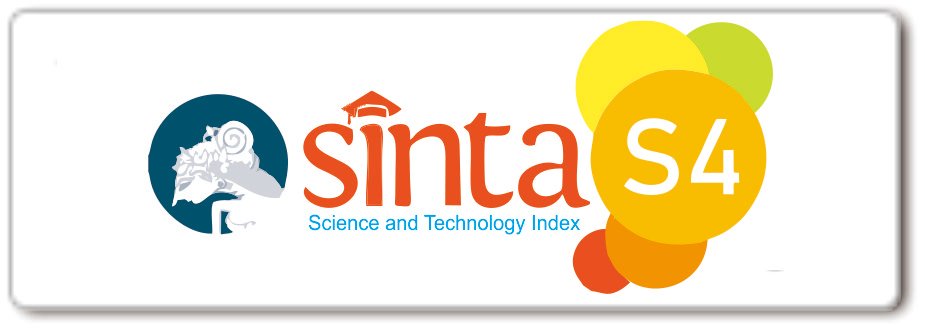KOMBINASI BEDAH EKSISI, INJEKSI KORTIKOSTEROID INTRALESI, DAN GEL SILIKON PADA TATA LAKSANA KELOID DI CUPING TELINGA
DOI:
https://doi.org/10.33820/mdvi.v46i2.61Abstract
Keloid adalah proliferasi jaringan fibrosa jinak di kulit yang sering terjadi setelah trauma kulit dan sering timbul di cuping telinga. Terapi tunggal pada keloid menghasilkan angka kekambuhan yang tinggi. Kombinasi bedah eksisi, injeksi steroid intralesi, dan gel silikon akan mengurangi kekambuhan. Kami melaporkan keloid yang bertambah besar di kedua cuping telinga seorang perempuan usia 21 tahun, sejak 4 tahun setelah berganti anting. Riwayat injeksi triamsinolon asetonid rutin setiap 2 minggu selama satu tahun. Benjolan di telinga kiri mengecil, tetapi benjolan di telinga kanan mengalami sedikit perbaikan. Tidak ada riwayat luka yang menjadi keloid di bagian tubuh yang lain. Pemeriksaan regio aurikularis dekstra menunjukkan nodul bulat lonjong soliter hiperpigmentasi dengan konsistensi padat kenyal dan diameter 1,3 cm. Bedah eksisi dilakukan pada keloid. Selain itu, dilakukan injeksi triamsinolon asetonid intralesi dan aplikasi gel silikon 1 minggu setelah eksisi. Evaluasi pasien pada bulan ke-8 tidak menunjukkan pertumbuhan keloid. Kombinasi bedah eksisi, injeksi kortikosteroid intralesi, dan aplikasi gel silikon pada keloid cuping telinga dapat ini menekan kekambuhan dibandingkan dengan terapi injeksi kortikosteroid tunggal yang diberikan sebelumnya.
Kata Kunci: keloid, bedah eksisi, kortikosteroid intralesi, gel silikon
Downloads
References
Advancing keloid treatment: a novel multimodal approach
to ear keloids. Dermatol Surg. 2017;43:1164-9.
2. Jones ME, Hardy C, Ridgway J. Keloid management: A
retrospective case review on a new approach using surgical
excision, platelet-rich plasma, and in-office superficial
photon X-ray radiation therapy. Advances in skin & wound
care. 2016;29:303-7.
3. Hunasgi S, Koneru A, Vanishree M, Shamala R. Keloid: A
case report and review of pathophysiology and differences
between keloid and hypertrophic scars. J Oral and
Maxillofac Pathol. 2013;17:116-20.
4. Sharquie KE, Noaimi AA, Al-Karhi MR. Debulking of
Keloid Combined with Intralesional Injection of 5-
Flurouracil and Triamcinolone versus Intralesional
Injection of 5-Flurouracil and Triamcinolone. J Cosmet,
Dermatol Scien and Applicat. 2014;4:85-91.
5. Narakula GK, Shenoy RK. A prospective clinical review of
“multi model†approach for treating ear keloids. Indian J
Plast Surg. 2008;41:2-7.
6. Kelly AP. Medical and surgical therapies for keloids.
Dermatol Ther. 2004;17:212-8.
7. Viera MH, Vivas AC, Berman B. Update on keloid
management: clinical and basic science advances.
Advances in Wound Care. 2012;1:200-6.
8. Jones ME, Hardy CJ, Ridgway JM. Head and neck keloid
management: A retrospective early review on a new
approach using surgical excision, platelet rich plasma and
in office superficial photon X-ray radiation. Edorium J
Otolaryngol. 2015;2:14-9.
9. Sobec R, Dobreanu C, Fodor L, Şomcutean A, Ţichil I,
Cosgarea M. Ear keloids: a review and update of treatment
options. Clujul Medical. 2013;86:313-7.
10. Wolfram D, Tzankov A, Pülzl P, Pizaâ€Katzer HI. Hypertrophic
scars and keloids—a review of their pathophysiology, risk
factors, and therapeutic management. Dermatol Sur.
2009;35:171-81.
11. Chike-Obi CJ, Cole PD, Brissett AE. Keloids: pathogenesis,
clinical features, and management. Seminars in Plastic
Surgery. 2009;23:178-84.
12. Gauglitz GG. Management of keloids and hypertrophic
scars: current and emerging options. Clin, Cosmet and
Invest Dermatol. 2013;6:103-14.
13. Huang C, Murphy GF, Akaishi S, Ogawa R. Keloids and
hypertrophic scars: update and future directions. Plastic and
Reconstructive Surgery Global Open. 2013;1: e25
14. Robles DT, Berg D. Abnormal wound healing: keloids.
Clin Dermatol. 2007;25:26-32.
15. Ichioka S, Ando T, Shibata M, Sekiya N, Nakatsuka T.
Oxygen consumption of keloids and hypertrophic scars.
Ann Plast Surg. 2008;60:194-7.
16. Sasaki A, Mueller RV, Xi G, Sipe R, Buck D, Hollinger J.
Mast cells: an unexpected finding in the modulation of
cutaneous wound repair by charged beads. Plastic and
Reconstructive Surgery. 2003;111:1446-53.
17. Tripoli M, Cordova A, Melloni C, Zabbia G, Maggì F,
Moschella F. The use of triamcinolone combined with
surgery in major ear keloid treatment: a personal two stages
approach. Europ J Plastic Surgery. 2015;38:205-10.
18. Lindsey WH, Davis PT. Facial keloids: A 15-year
experience. Archives of Otolaryngol - Head & Neck
Surgery. 1997;123:397-400.
19. Lee NY, Song WK, Whang KK. A review of treatments of
keloids with intramarginal surgical excision and postoperative
irradiation to prevent recurrences. Ann Dermatol. 2004;
16:145-52.
20. Mafong EA, Ashinoff R. Treatment of hypertrophic scars
and keloids: a review. Aesth Surg J.2000;20:114-21.
21. Kelly AP. Update on the management of keloids. Seminars
in Cutaneous Medicine and Surgery. 2009;28:71-6.













